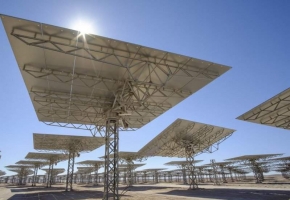Historic Oil Glut Amassed During the Pandemic Has Almost Gone

Oil storage tanks in Cushing, Oklahoma.
Photographer: Daniel Acker/Bloomberg
The unprecedented oil inventory glut that amassed during the coronavirus pandemic is almost gone, underpinning a price recovery that’s rescuing producers but vexing consumers.
Barely a fifth of the surplus that flooded into the storage tanks of developed economies when oil demand crashed last year remained as of February, according to the International Energy Agency. Since then, the lingering remnants have been whittled away as supplies hoarded at sea plunge and a key depot in South Africa is depleted.
The re-balancing comes as OPEC and its allies keep vast swathes of production off-line and a tentative economic recovery rekindles global fuel demand. It’s propping international crude prices near $67 a barrel, a boon for producers yet an increasing concern for motorists and governments wary of inflation.
The process isn’t quite complete. A considerable overhang appears to remain off the coast of China’s Shandong province, though this may have accumulated to feed new refineries.
Working off the remainder of the global excess may take some more time, as OPEC+ is reviving some halted supplies and new virus outbreaks in India and Brazil threaten demand. Still, the end of the glut at least appears to be in sight.
Oil inventories in developed economies stood just 57 million barrels above their 2015-2019 average as of February, down from a peak of 249 million in July.
Total stockpiles of crude and products subsided in late February to 1.28 billion barrels – a level seen before coronavirus erupted – and continue to hover there.
The oil surplus that gathered on the world’s seas is also diminishing. Ships were turned into makeshift floating depots when onshore facilities grew scarce last year, but the volumes have plunged. They’ve tumbled about by 27% in the past two weeks to 50.7 million barrels, the lowest in a year.
For the 23-nation OPEC+ coalition led by Saudi Arabia and Russia, the decline is a vindication of the bold strategy they adopted a year ago. The alliance slashed output by 10 million barrels a day last April – roughly 10% of global supplies – and is now in the process of carefully restoring some of the halted barrels.
For better or worse, the re-balancing should continue. As demand picks up further, global inventories will decline at a rate of 2.2 million barrels a day in the second half, propelling Brent crude to $74 a barrel or even higher, Citigroup predicts.
Source: Bloomberg/The International Energy Agency







